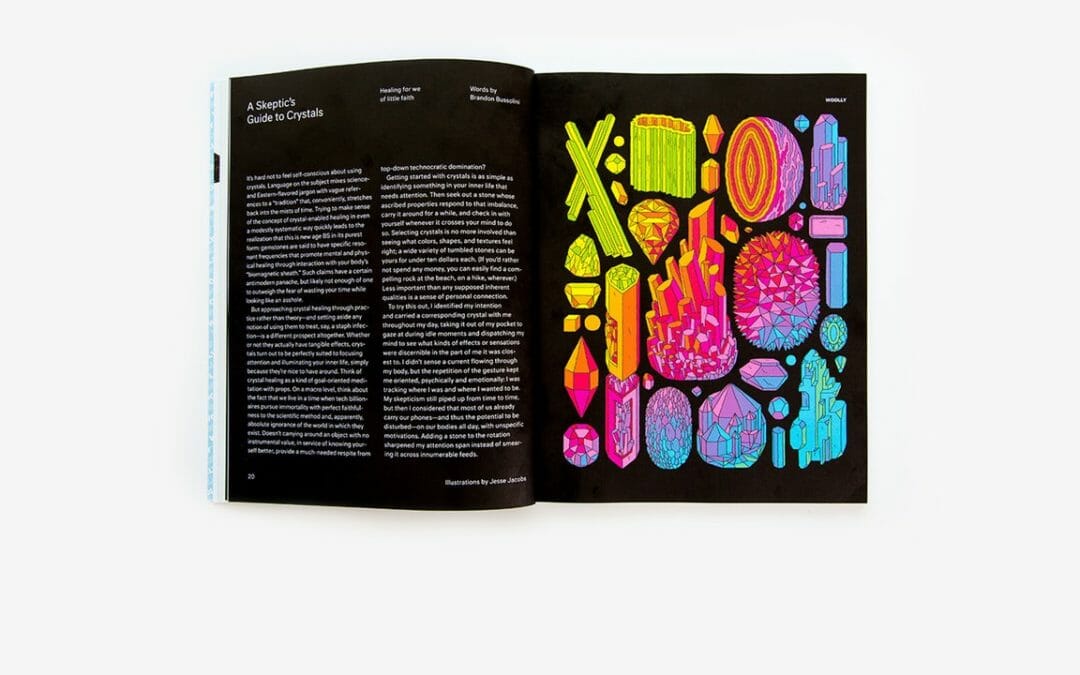Print Is Dead, Long Live Print
Every year, we hear print is dead. And every year, it proves us dead wrong. The fact is, digital transformation has its upper limits. There are some analog experiences – like the genuine discovery and delight of wandering through a great bookstore – that technology is currently incapable of replicating. Between 2009 and 2015, what’s known as the Amazon-fueled “retail apocalypse,” independent bookstores grew by 35 percent.
Perhaps it’s the tenacity and resilience of print that has led many companies to start publishing their own magazines. Uber, Airbnb, Casper, Away, Dollar Shave Club, Lenovo, Redbull, and Amtrak all have their own physical publications. So, what’s driving this trend? And does it make sense for your brand to devote the time and energy it takes to create a magazine?
The Digital Dark Age
As permanent and omnipresent all of our technology feels, it’s worth remembering it can all vanish overnight. Last week, to little fanfare, Myspace announced that it lost 12 years of music – an estimated 53 million files – amid a data migration problem. As writer Damon Krukowski notes, some historians fear that we are in the midst of a digital dark age, “a period of history that will be largely blank due to lost information – like a giant broken link when the future tries to look back at our time.” Physical media, of course, has the benefit of being physical.
Beyond standing the test of time, magazines have been working out the same problems we’re dealing with now: establishing a brand identity, producing engaging copy, designing striking visuals, educating your audience, bringing in advertising dollars, and attracting new subscribers to mailing lists. These are transferable skills that could shape how you approach your blog, how you build your email list, and how you partner with advertisers. If you can get it right on the page, chances are you can get it right on the web.
Expanding the Potential and Personality of Your Brand
In many branding meetings, I’ve heard clients say something to the effect of, “We wish we could do this, but it falls slightly outside the parameters of our brand.” The real power of a magazine is the creative permission it has to push those boundaries. Mel, the magazine from Dollar Shave Club, isn’t about razor production. It talks about sex, relationships, health, money, work, and topics of masculinity that speaks to their target audience. In expanding the way their customers think about themselves, they are also transforming how people think about Dollar Shave Club and forming a stronger emotional connection that leads to greater brand loyalty and awareness.
For a brand, a magazine is like a free pass to explore the most aspirational outer limits of your category. Casper makes mattresses, but Woolly is about comfort and wellness. Redbull makes energy drinks, but The Red Bulletin tells stories of inspirational people and their achievements from around the world. The process of creating a magazine can meet some of the most underserved needs for a brand:
- Having a safe space to experiment with your brand
- The never-ending hunt for fresh content
- The demand for crisp, authentic photography that isn’t stock
- Having engaging customer stories to share on social channels
- Creating emotional buy-in for employees to see the impact of their work
- Building new channels for partners and advertisers
- Expanding your audience
As Jen Rubio, President and Chief Brand Officer at Away says, the worst-case scenario for her magazine is that it becomes a “great travel blog.” The best case is that it becomes a “stand-alone media division that’s generating revenue, generating profit for the company.”
No Half-Measures
Critical to any print publication is the matter of distribution. Do you already have a model built into your offering? Airbnb, for instance, has a combination of physical locations with people that are seeking information about their surroundings. That’s a perfect fit. The key is locating a moment in your customer’s journey where they are hungry for more information – and finding out how to deliver it before they ask.
Remember, the only thing worse than not making a magazine is making a bad one. Don’t skimp out. This isn’t a way to repurpose old content or cloak ads as stories. This is a strategic asset for brands that are deeply curious about the world outside their product.
Emotive Brand is a brand strategy and design agency in Oakland, California.






I’m constantly searching on the internet for posts that will help me. Too much is clearly to learn about this. I believe you created good quality items in Functions also. Keep working, congrats! weekly mag pro